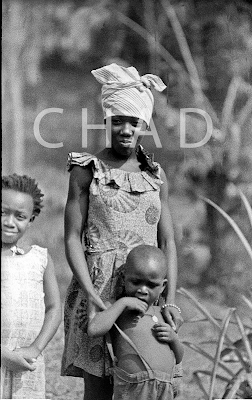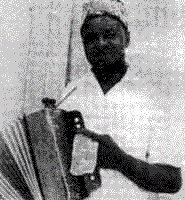


A Returned Peace Corps Volunteer's memories and views of his years in upcountry Sierra Leone from 1968 to 1970

It was also in this camp that American documentary filmmakers Banker White and Zach Niles along with Canadian singer-songwriter Chris Velan encountered the group, which by that point also included Black Nature, a teenaged orphan with a gift for rap, as well as Abdulrahim Kamara (Arahim) and Mohamed Bangura (Medo), both of whom had had limbs amputated by the rebels. The first-time filmmakers followed the band for three years as they moved from camp to camp. While filming, the United Nations sponsored a trip for the group to return to Freetown so they could see for themselves that the war was indeed over and safe for thousands of refugees to return home. As part of the trip, the UNHCR offered the band the opportunity to make their first studio recordings, which led to leader Reuben Koroma uniting the core group from the refugee camp with his former band mates,The Emperors, many of whom had remained in Freetown during the war. Together they recorded their debut album as Sierra Leone’s Refugee All Stars. The current touring lineup features members of both entities.
Now Sierra Leone’s Refugee All Stars tour the world spreading their message of peace and love in a "can't help but dance" show that fans from all musical backgrounds can enjoy. With a spirited fusion of traditional West African music, roots reggae and rhythmic traditional folk, Sierra Leone’s Refugee All Stars craft music that transforms and uplifts.












 taken in Kenema in 1969
taken in Kenema in 1969Salia was bitterly disappointed at first, but on the insistence of his father he settled down to playing the accordion "to the warriors and not for Europeans." From then on, Salia took his "education" seriously. Through hard work, determination and an innate poetic talent, he taught himself to play the accordion. Although his father was a renowned accordionist himself, Salia learnt by his own experience. He spoilt many accordions in the process but his father always bought him a new one.
Gradually, Salia's reputation began to spread, first in Mendeland and later all over Sierra Leone. He travelled from place to place entertaining chiefs and people with his stories and songs. After serving several chiefs, he moved to Rotifunk where he was court entertainer to Chief Albert Caulker for some time. After his stay in Rotifunk, he moved to Moyamba to work for the famous Chief Julius Gulama.
Always searching for knowledge and true to the spirit of minstrels, Salia was constantly on the move. He eventually ended up in Freetown where he joined the Sierra Leone Police Force until the outbreak of the Second World War. Up to this day, Salia remembers distinctly that his number in the police force was 377. His police duties did not stop him from playing the accordion.
Salia has composed hundreds of songs and entertained people in all walks of life all over the country. He has been a symbol of the artist in our traditional society, and he has spent all his life trying to establish the fact that there is dignity in art especially indigenous art. He is disappointed that Sierra Leone does not give enough appreciation to the efforts of indigenous artists. But he remains optimistic, and believes that even in his old age, he can still contribute to his art and to the nation's cultural development.
 from: http://www.sierra-leone.org/heroes10.html
from: http://www.sierra-leone.org/heroes10.html
on the Sierra Leone Web
also see: http://nikiibu.wordpress.com/




 above: Bondu women celebrate in front of #55 Dam Rd - Dama Road looking toward Kenema. That's Mrs. Porter's (Elizabeth Porter) house in the background.
above: Bondu women celebrate in front of #55 Dam Rd - Dama Road looking toward Kenema. That's Mrs. Porter's (Elizabeth Porter) house in the background.  1. above - taken in backyard at #55 Dama Rd - here women celebrate as part of the Bondu. In background is the kitchen for #55.
1. above - taken in backyard at #55 Dama Rd - here women celebrate as part of the Bondu. In background is the kitchen for #55.  2. above - again in backyard at #55 Dama Road at about same time as 1st picture. That is Mama Hawa on left looking at camera with Bonya standing over her right shoulder.
2. above - again in backyard at #55 Dama Road at about same time as 1st picture. That is Mama Hawa on left looking at camera with Bonya standing over her right shoulder. 
3. above - taken in front of #55 Dama Rd. That's Dama Road running by as Bondo Devil heads out on road.
The above photos were taken at or around #55 Dama Road in Kenema. They were taken in 1969. [double click on any picture to enlarge it]

 Taken at the small village of Foindu in Nongowa Chiefdom, Kenema District, Eastern Province here a woman that I remember was named Massa leads the Bondo Devil and women in a parade of the village. Dressed festively in white these elders of the Bondo Society paraded around the village before settling with the devil at a prominant house. There are other pictures of this that have been previously posted. Photo probably taken in 1969.
Taken at the small village of Foindu in Nongowa Chiefdom, Kenema District, Eastern Province here a woman that I remember was named Massa leads the Bondo Devil and women in a parade of the village. Dressed festively in white these elders of the Bondo Society paraded around the village before settling with the devil at a prominant house. There are other pictures of this that have been previously posted. Photo probably taken in 1969.


 Teacher Amara brushes his farm with his machete. In those days there was no mechanization. Farm work was (and probably still is) laborious. Notice how thick the brush is - this is very typical of an upland farm. After cutting the brush - the next step is to burn the brush. These cleared areas are then planted with rice seed on soil similar to what you see in this picture at Teacher Amara's feet. This is hard work!
Teacher Amara brushes his farm with his machete. In those days there was no mechanization. Farm work was (and probably still is) laborious. Notice how thick the brush is - this is very typical of an upland farm. After cutting the brush - the next step is to burn the brush. These cleared areas are then planted with rice seed on soil similar to what you see in this picture at Teacher Amara's feet. This is hard work! look carefully in one of the palm trees to the left and you will see the young man below up in the tree, tapping it for palm wine. Below is the same person. [click on photo to enlarge]
look carefully in one of the palm trees to the left and you will see the young man below up in the tree, tapping it for palm wine. Below is the same person. [click on photo to enlarge]

 The above series are pictures of Mama Hawa's sister - a woman I did not really know but who I was asked to photograph.
The above series are pictures of Mama Hawa's sister - a woman I did not really know but who I was asked to photograph. 

 Angelor Lemor was one of our Teacher's Training Students. She was a wonderful person, and good student, and during our 2nd year she gave birth to a son. I am told by Sister Celia (Holy Rosary Sisters - retired) that he has become a priest. Angelor was a hard worker, very committed to teaching, very serious, and very earnest. I often wonder how she did - but I suspect that given her work ethic she is doing fine. This photo was taken in either late 1969 or in 1970.
Angelor Lemor was one of our Teacher's Training Students. She was a wonderful person, and good student, and during our 2nd year she gave birth to a son. I am told by Sister Celia (Holy Rosary Sisters - retired) that he has become a priest. Angelor was a hard worker, very committed to teaching, very serious, and very earnest. I often wonder how she did - but I suspect that given her work ethic she is doing fine. This photo was taken in either late 1969 or in 1970.

 The above photos were taken in Foindu Nongowa. Joe Williams was a laborer who on one of my Foindu visits asked me to take a picture of him and his wife and daughter. I agreed to do it and he got into his dress clothes, then pulled out his radio and sat in front of his house. I gave them a copy of these pictures. Taken in 1969.
The above photos were taken in Foindu Nongowa. Joe Williams was a laborer who on one of my Foindu visits asked me to take a picture of him and his wife and daughter. I agreed to do it and he got into his dress clothes, then pulled out his radio and sat in front of his house. I gave them a copy of these pictures. Taken in 1969.
